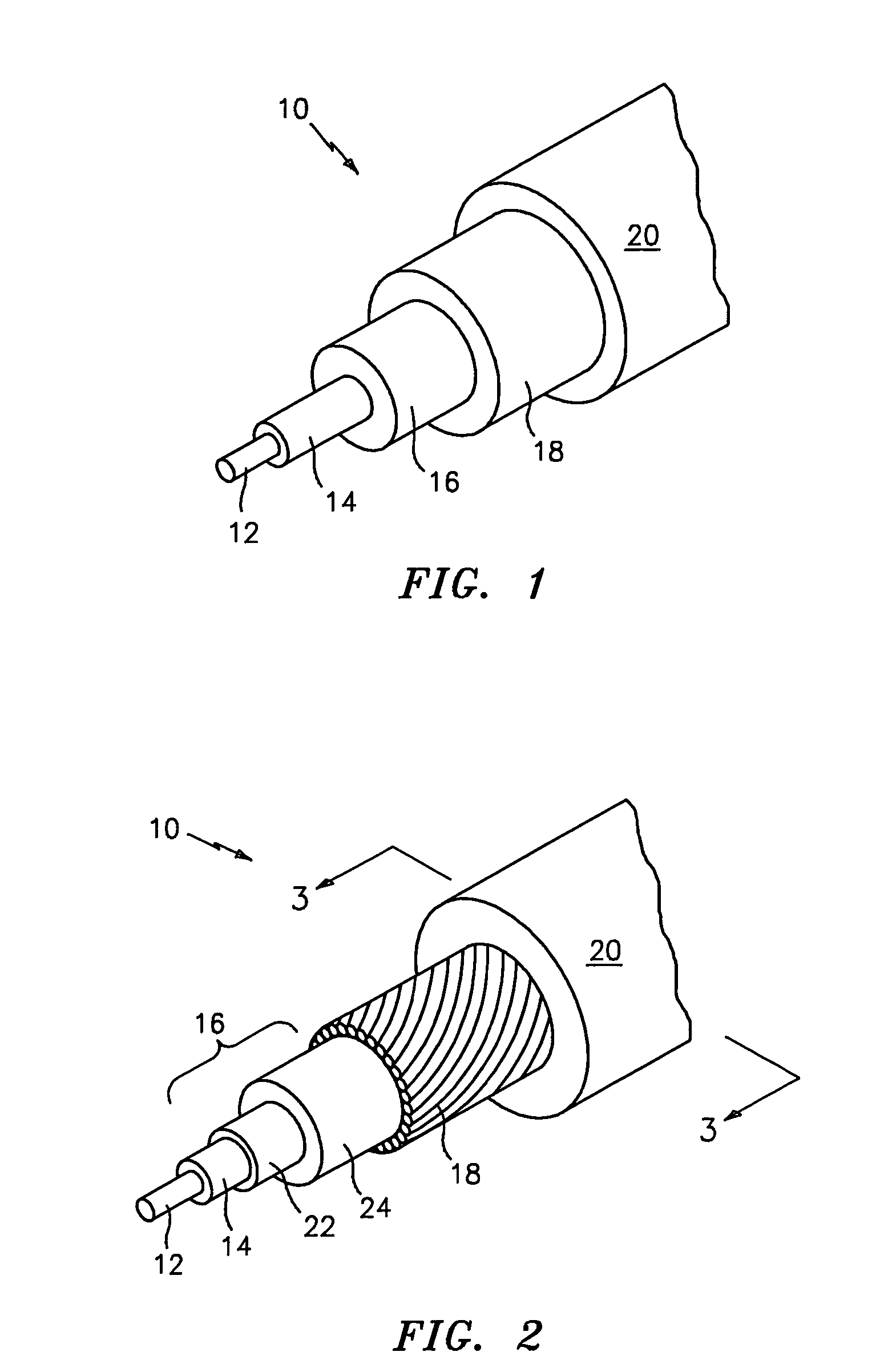Low smoke, low toxicity fiber optic cable
a fiber optic cable, low toxicity technology, applied in the field of fiber optic cables, can solve the problems of fiber optic cables subjected to conditions, requiring flawless performance in extremely demanding physical environments, loss of life and property,
- Summary
- Abstract
- Description
- Claims
- Application Information
AI Technical Summary
Benefits of technology
Problems solved by technology
Method used
Image
Examples
Embodiment Construction
[0035]The fiber optic cable of the present invention demonstrates a combination of properties not found in conventional fiber optic cables. This unique combination of desirable properties makes the inventive cables extremely valuable in applications such as aircraft, missiles, satellites, etc. More specifically, the inventive cable exhibits low smoke and toxic gas emissions and facilitates bonding to optical connectors such as LC connectors. In a preferred embodiment, the inventive cable further exhibits improved dimensional stability in the form of reduced material shrinkage (especially reduced secondary buffer and jacket shrinkage in the axial direction) and thus reduced optical attenuation in the cable throughout a wide temperature range of from −65° C. to 135° C.
[0036]The term “low toxicity”, as used herein, is intended to mean that when tested in accordance with Boeing BSS-7324, the cable satisfies the toxicity requirements noted therein and in paragraph [0006] hereinabove.
[003...
PUM
 Login to View More
Login to View More Abstract
Description
Claims
Application Information
 Login to View More
Login to View More - R&D
- Intellectual Property
- Life Sciences
- Materials
- Tech Scout
- Unparalleled Data Quality
- Higher Quality Content
- 60% Fewer Hallucinations
Browse by: Latest US Patents, China's latest patents, Technical Efficacy Thesaurus, Application Domain, Technology Topic, Popular Technical Reports.
© 2025 PatSnap. All rights reserved.Legal|Privacy policy|Modern Slavery Act Transparency Statement|Sitemap|About US| Contact US: help@patsnap.com



